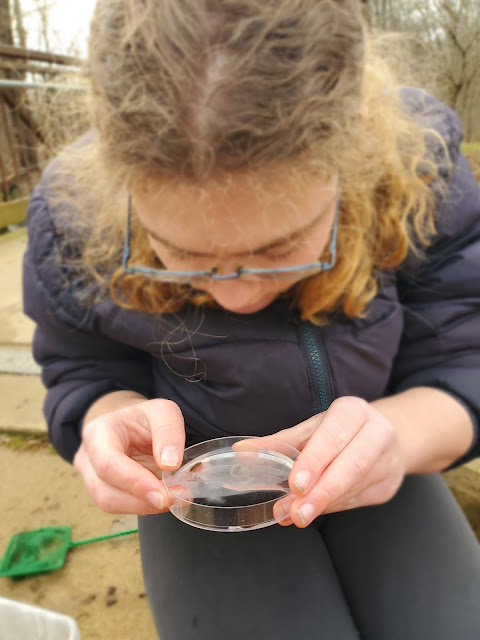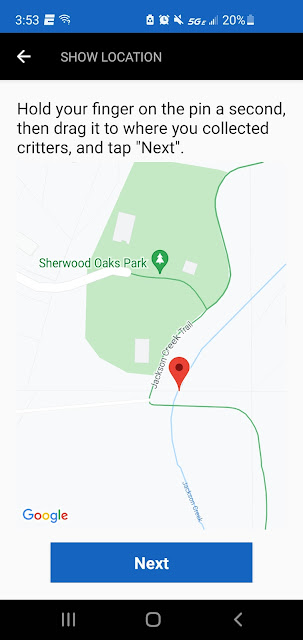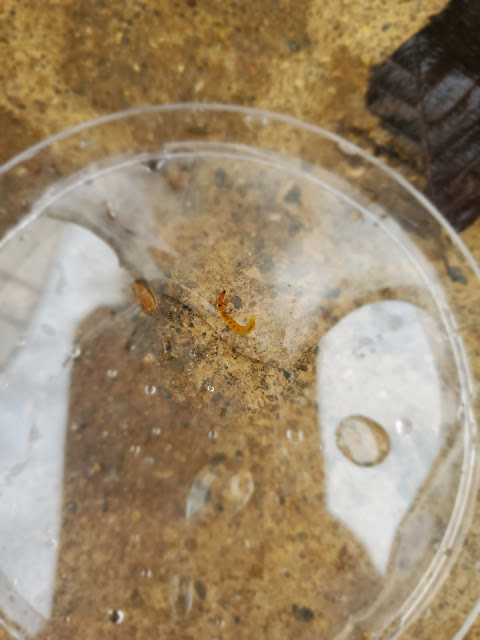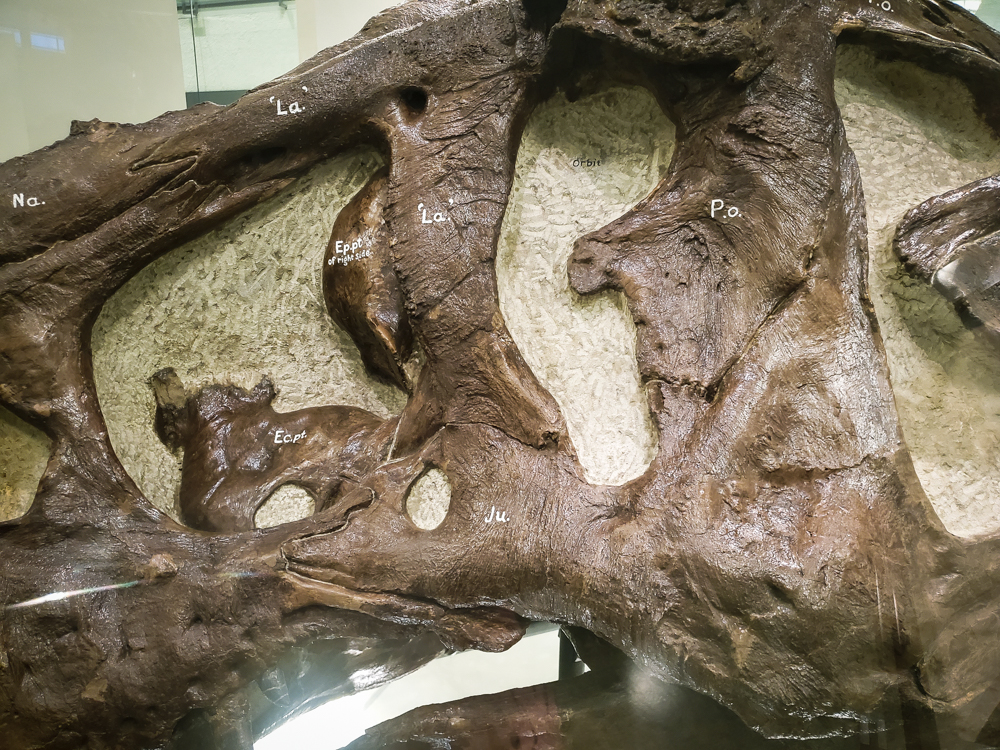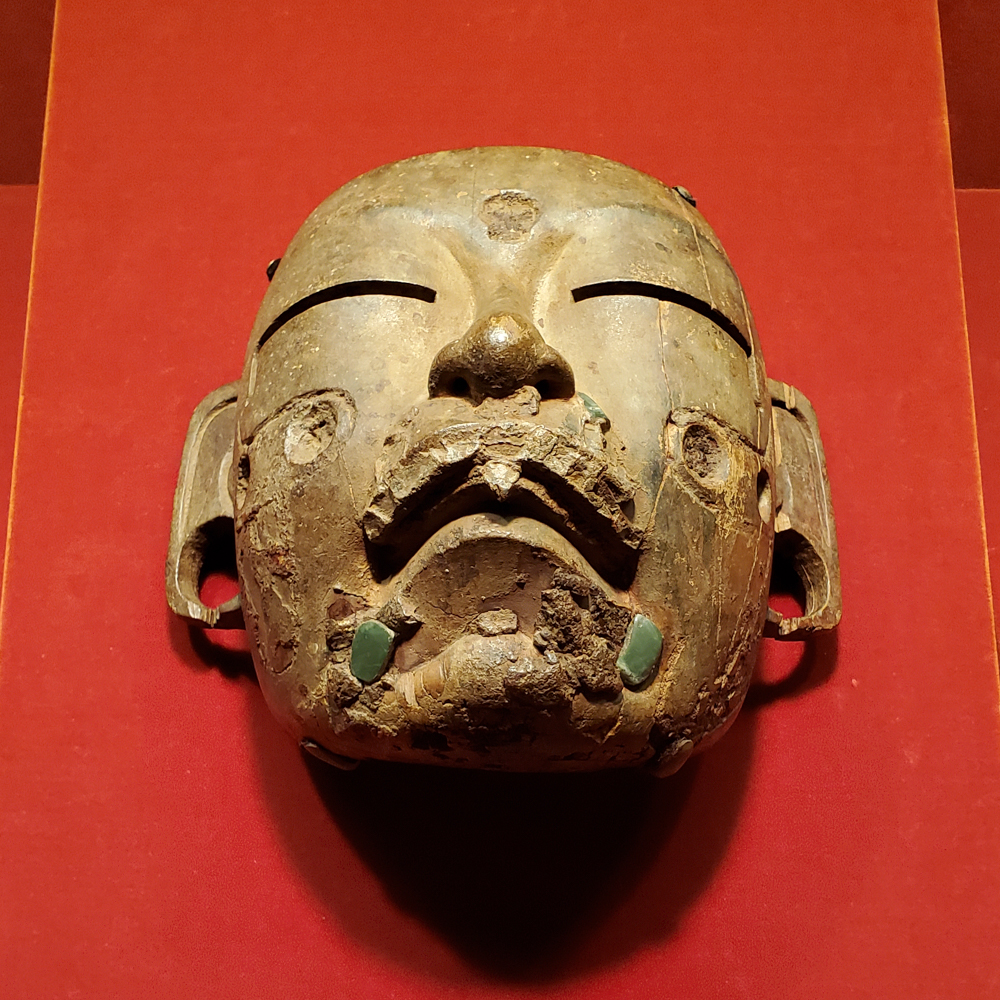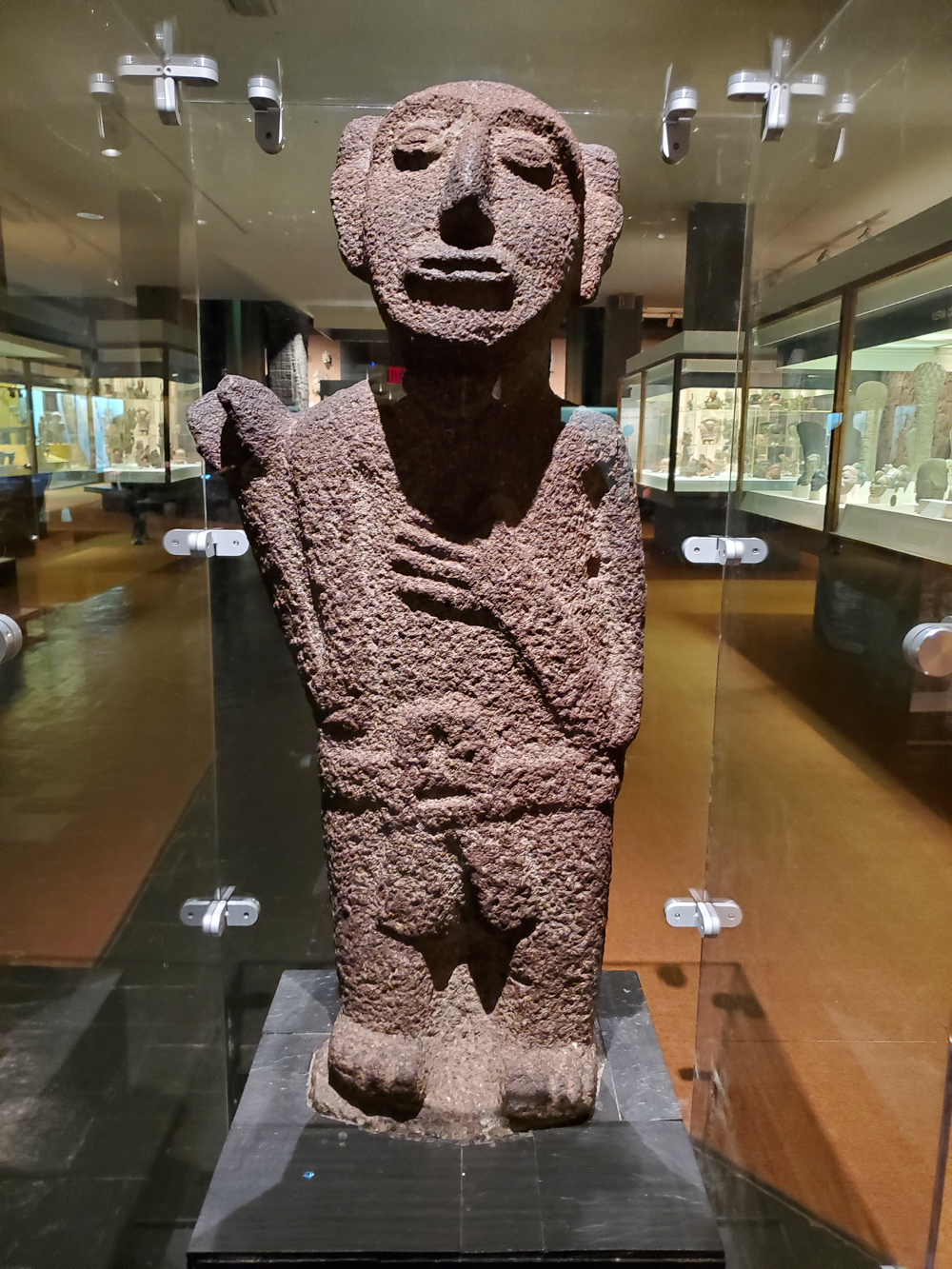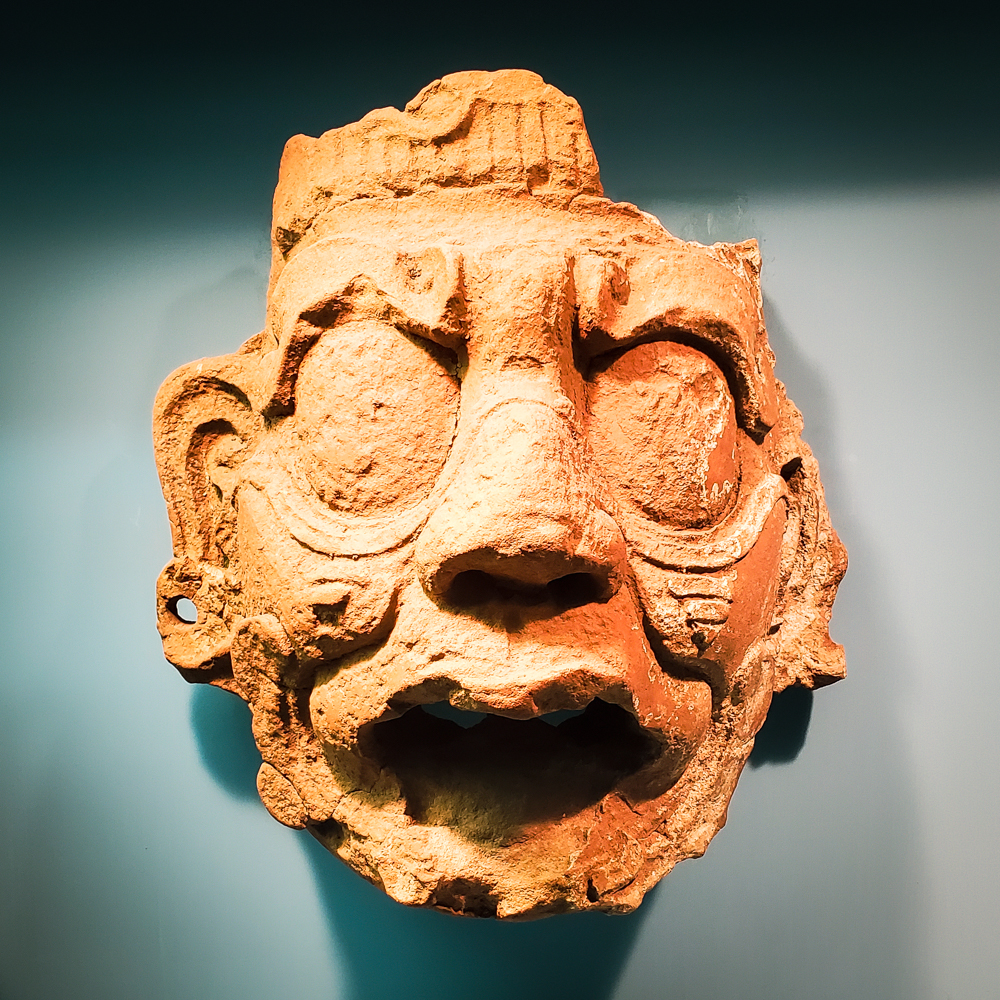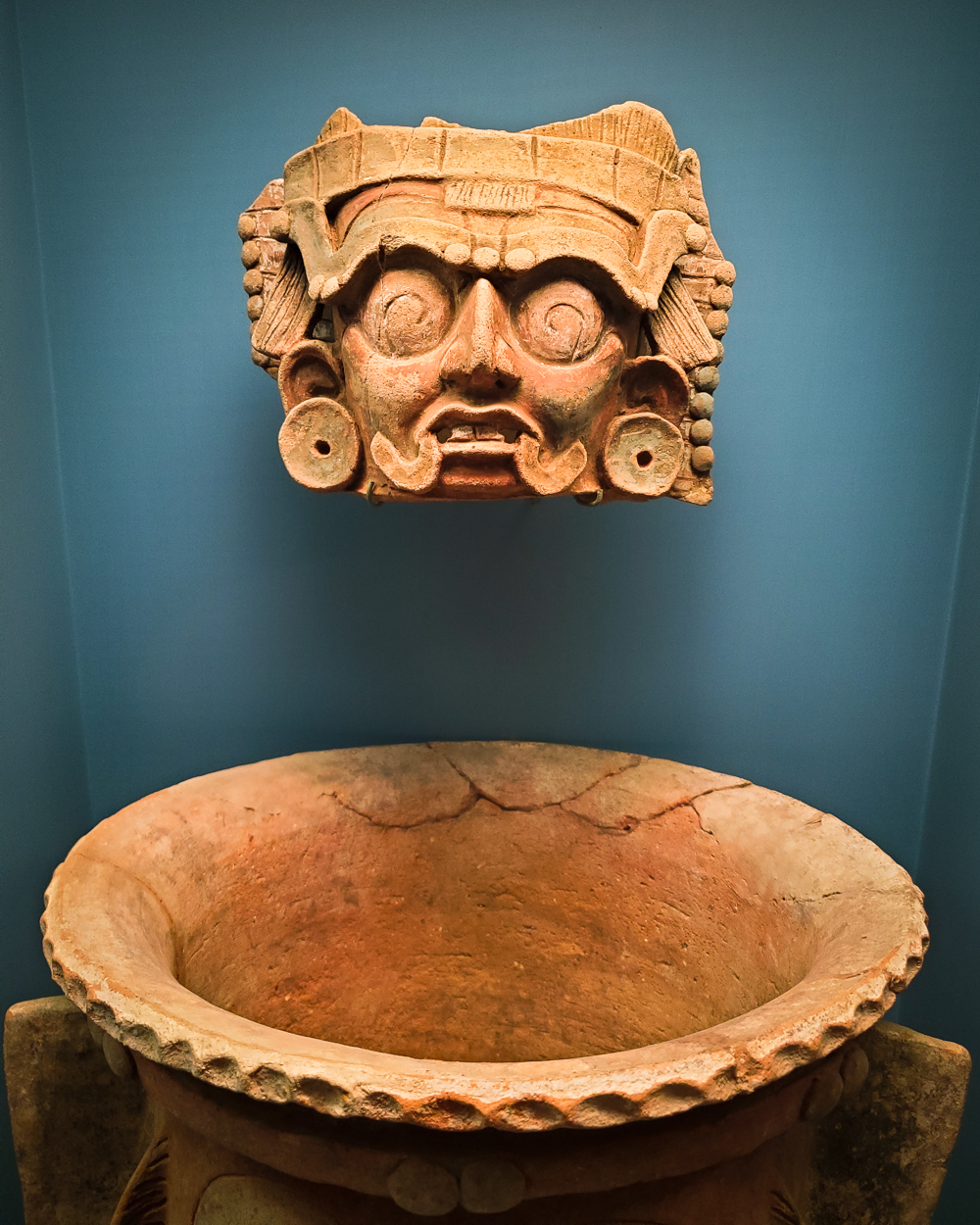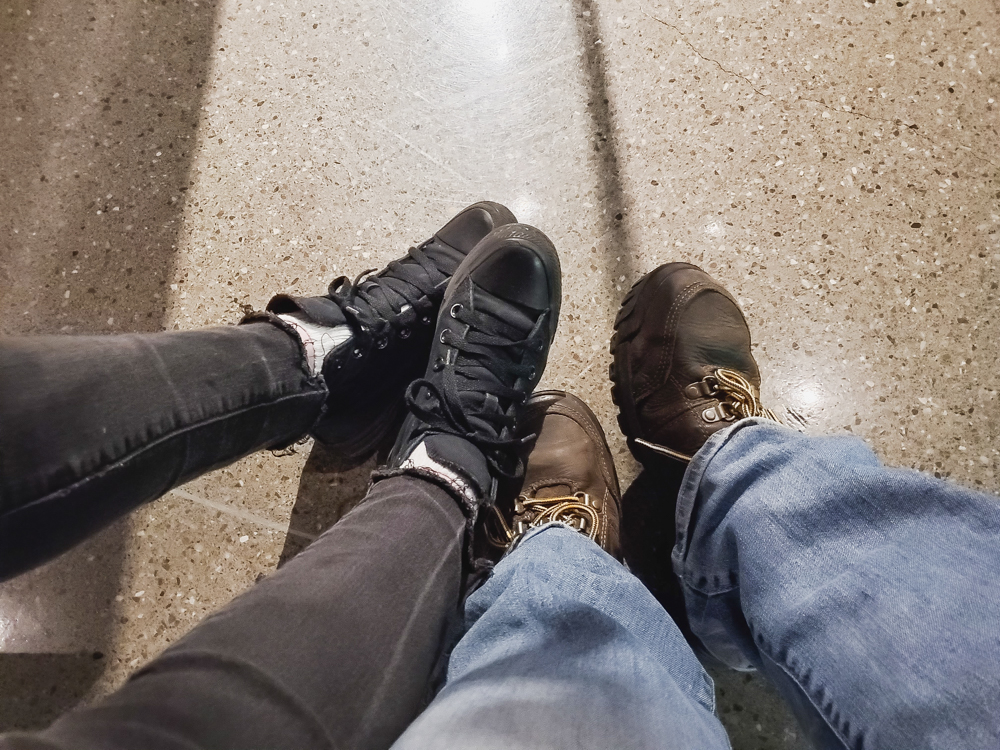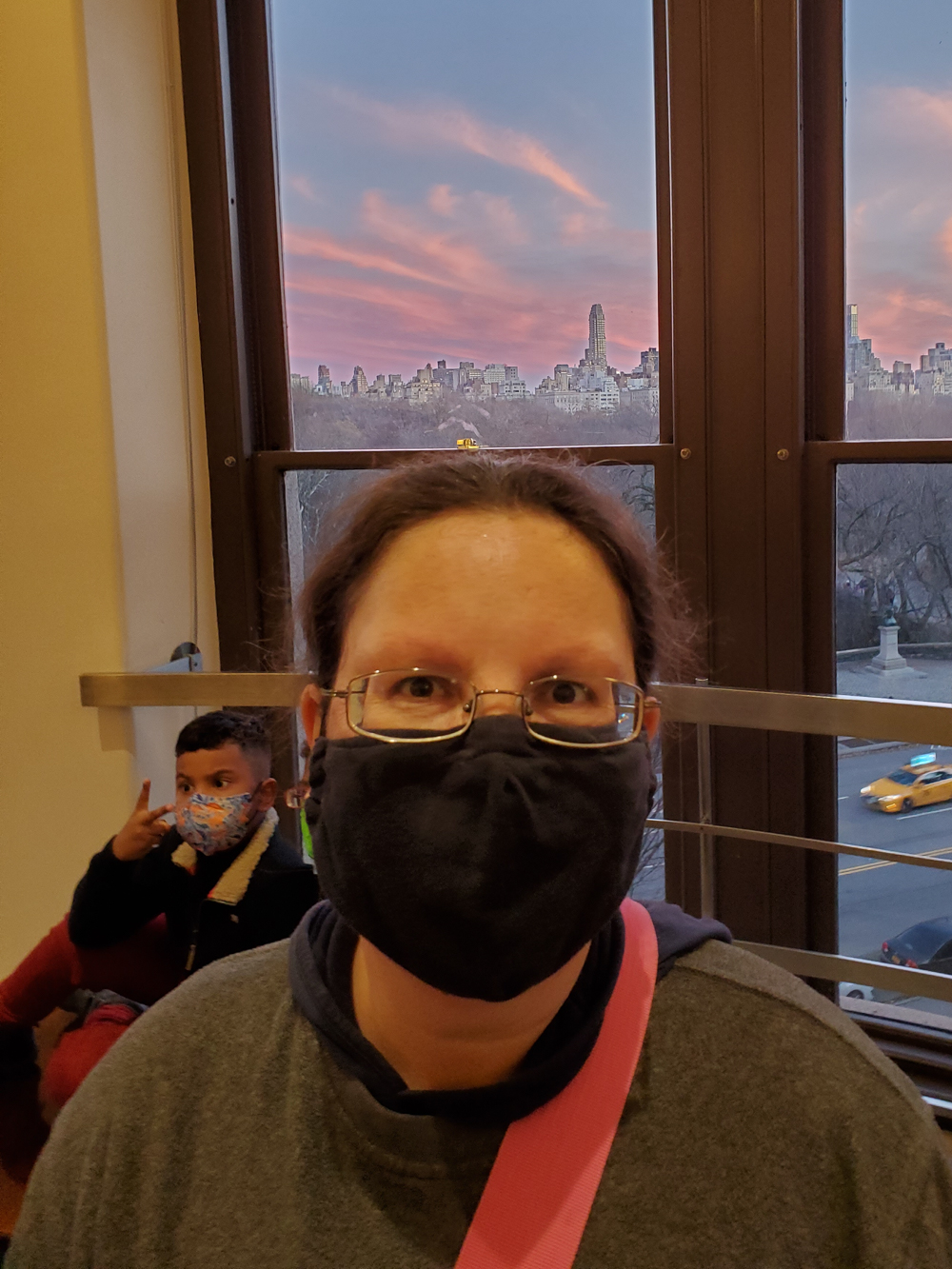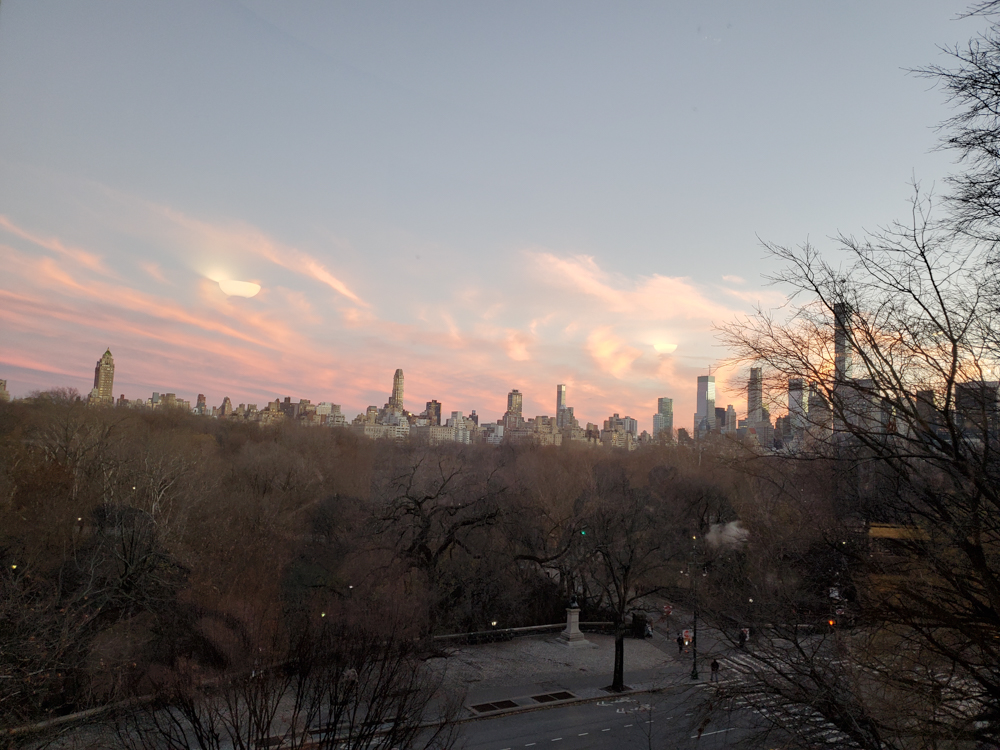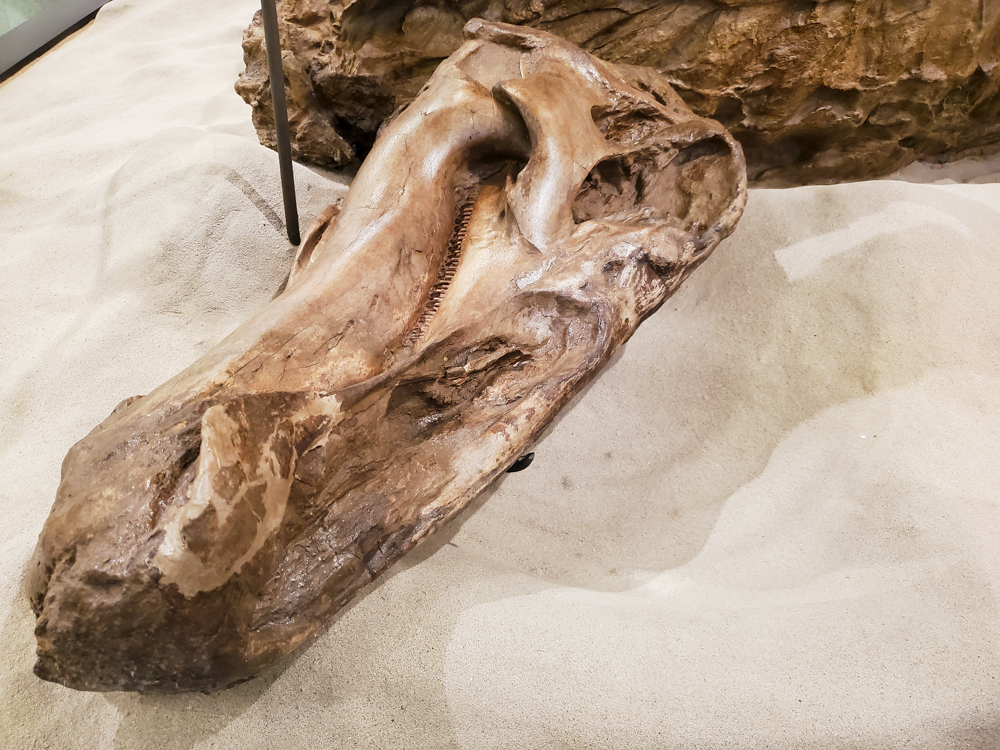I tried really hard to confine myself to only one museum on this whirlwind trip. Mind you, I could spend every day of the rest of my life in a different museum and be as happy as a Mercenaria mercenaria, but I'm supposed to be practicing moderation in all things, sigh, so I picked only one museum--the very, very large American Museum of Natural History--and planned to spend only one day--a very, very, VERY long day!--there.
I also managed to pick the very stupidest way to get there, because just because Google Maps includes subway routes doesn't mean they have to make sense, and I managed to turn the exact wrong way upon leaving the subway station, which is my absolute biggest pet peeve, grrr. But finally, passing three playgrounds and a farmer's market and two different Covid testing/vaccination stations, we made it!
Or rather, we made it into the line that extended from the entrance, down the stairs, around a corner, and past the building. And that WAS the line for our reserved tickets! We provided plenty of entertainment for the passersby who felt pretty happily smug that THEY weren't the ones in such a long line, and one guy smirkingly informed us as he passed that we'd still be in line at 4:00 pm, but joke's on him, because it took exactly 41 minutes until it was our turn to show our vaccination cards (the NYC Covid Safe app is the best thing EVER!) and tickets and get sent into natural history heaven.
I don't so much love the hands-on science museums that I've spent the kids' entire lives shuttling them to and from, it seems, but give me an old-school set of exhibits like the Hall of African Mammals and I. Am. SET!
And OMG they have dinosaurs!
You guys, that's a Barnum Brown Tyrannosaurus rex! Here's me being... not real chill about the first complete T. rex skull, also collected by Brown:

And the Apatosaurus!
It's walking on an excavation of the
Glen Rose Trackway. When I was an undergrad way back forever ago, my university was in driving distance of several fascinating fossil sites, and I'd often make a day trip to hang out in the Glen Rose Formation instead of writing my English Lit essays.
I would have told you back then that I had zero interest in science, too! Self-knowledge has never been part of my skill set...
Syd and I hadn't eaten breakfast, so she and I took a break after this to brave the crowded cafeteria while Will and Matt visited another hall. As soon as we sat down, though, I texted Matt that there were free refills on the fountain drinks, and we'd bought a cup(!!!), and mysteriously, even though they hadn't been at all hungry or thirsty when we separated, they both showed up in minutes and helped us do our part to get our money's worth on our five-dollar drink cup.
Ahem.
So, I did have one ulterior motive for visiting the American Museum of Natural History as opposed to, say, the MOMA. The kids and I are studying Meso-American history, geography, and culture this year, and the AMNH has an excellent Hall of Mexico and Central America.
This is a votive adze, a ceremonial piece made of jade and probably of Olmec creation. Fun fact: the Olmec produced a LOT of art depicting were-jaguars, and this is likely one of them!
This mask is currently the only known Olmec object made of wood. You can see bits of a jade mosaic that was added to it in some post-Olmec time:
At almost six feet, this is a life-size plaster replica of an Olmec monument that's thought to be the portrait of a leader. You'll be pleased to know that the original is home in Xalapa, Veracruz:
This is an Aztec sculpture. This type of figure, with that one hand raised, has also been found in several other Aztec sites:
This is a clay funeral urn from Oaxaca, probably from around 200-550 AD. It was collected in 1904, and on the
AMNH database you can see the original manuscript catalog for this and the other items in this hall. They're fascinating, because they're all handwritten (and why would you not use your most legible handwriting when writing a museum catalog?!?), and they make clear that provenance around this time was pretty fast and loose. One entry I looked at described some artifacts that came buried in a box full of dirt along with a skull!
Here's another clay urn from the same site. When I was looking this one up in the AMNH database, I found a more updated catalog that described it as a product of the 1901 Loubat Expedition. I'm low-key interested in historic archeological expeditions (mainly because of how Wild West, unethical, and off-the-rails they could be), so I did some additional digging for info, and found a
dissertation about the conflict between Mexican and American representation during these historic expeditions.
Basically, for the Loubat Expedition, the AMNH made a contract with the government of Mexico, stating where they'd go and what they'd look for, etc. The AMNH had a guy, Marshall Seville, and the Mexican government had a guy, Leopoldo Batres. They were meant to work together in relative harmony, but Seville spends most of his written reports back to the AMNH bitching about Batres, and Batres spends most of his reports back to the Mexican government talking about all the cool stuff he was doing and, oh yeah, Seville was also present, I guess.
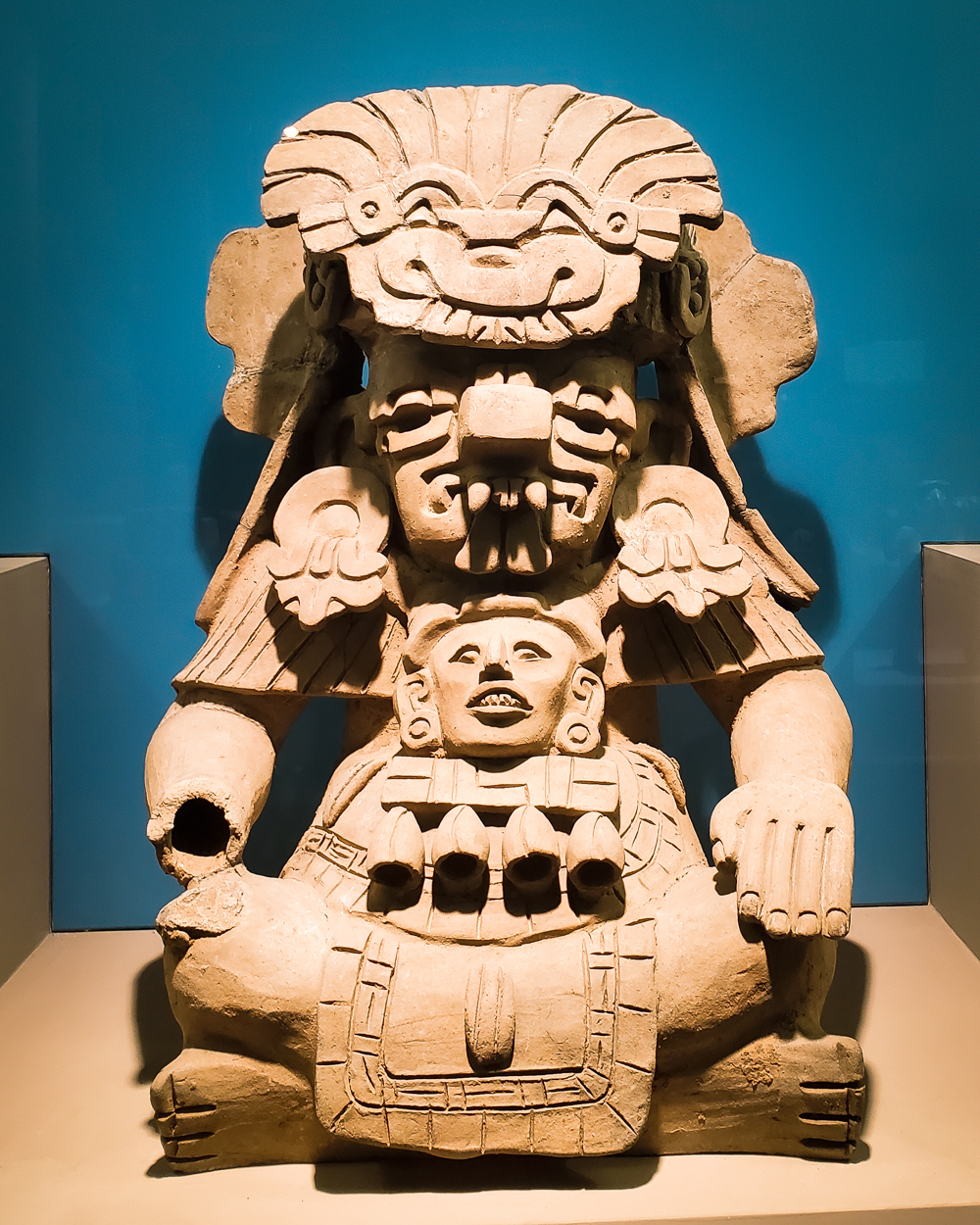
Here's a model of an Aztec stone depicting the date when the Aztecs won a bunch of really cool wars against likely unsuspecting outlying nations. We were sitting on a bench across from this stone, resting our feet, when a family walked by that contained my least-favorite travel persona: Man Who Loudly Explains Things. Man Who Loudly Explains Things proceeded to explain to his family about the Aztec calendar that predicts the end of the world (I gritted my teeth) and the Aztec ball game in which they sacrificed the losers to their gods (I gasped, whirled around to my own family, and exclaimed "That's not true!" while they reminded me that I'm supposed to shush in public).
I mean, yes, people probably got sacrificed sometimes, but 1) we don't know nearly enough about these ancient nations to say with any kind of certainty what they did or didn't do, especially about something as emotionally charged as human sacrifice (I blame you entirely for this, Diego de Landa!), and 2) OBVIOUSLY they didn't always sacrifice the losers of this game, because it's a really difficult game! If you always sacrificed the losers, all the players would suck at it and you'd probably run out of them after too long, too.
Here's a replica of a 700s Maya Stela that's also thankfully still where it's supposed to be in Mexico.
This is a limestone slab from Guatemala circa 633. Check out that beautiful writing!
A lot of figurines like this one were found in graves on the Island of Jaina in Tabasco. They range from about 600-900 AD.
This is another clay Maya sculpture
The provenance for these little bowls is unclear, other than that they're circa 600-900 AD from Mexico. That little guy is emerging from a shell, though, which says something interesting to me about the Maya's relationship to the ocean.
Here's another figure from the same area with an uncertain provenance, although they think it's probably from Guatemala:
And here are some painted vases from the same period. Reading between the lines in the manuscript catalog, I get the idea that much of the early 1900s consisted of rich people donating artifacts of uncertain provenance, probably looted, bought on the black market, or otherwise illegally put into their possession. The AMNH said thanks, wrote down the little info about them that the donors could give, and popped them into their collections.
At one point I left the family so I could go find a bathroom (SO many refills of fountain lemonade!!!), and when Matt texted me much later to find out who'd abducted me and what they wanted for ransom, I was all, "Oh, right... I sort of ended up in the
Hall of Meteorites instead?"
Side note: I'm going to pretend to the kids that the Chicxulub Crater is an important part of our Meso-America study because when we take our Girl Scout troop trip to Mexico, our ship will be sailing right over it!!!!! When we do, you'll find me standing on the deck screaming "SQUEE!!!!!"
Eventually, I met up with everyone else in the
Halls of Gems and Minerals. The kids really liked this exhibit, so we're going to do more with it this semester as part of Syd's geology study.
This is a 9-foot amethyst geode. It definitely beats out the quartz geodes that the kids and I collect while creek stomping!
This is an 838-pound stibnite, formed with spacious perfection in an underground cavern:
This is elbaite tourmaline from Brazil.
The afternoon is very much wearing away at this point, and here Will kind of lost her head a little. I had mentioned numerous times throughout the day that the AMNH is too big to see in one day, but it's not going anywhere, so we'll see what we can see in one day and then we'll come back another day to see some more. I encouraged Will to choose specific halls to visit, and for most of the day, she happily wandered from exhibit to exhibit, happy as a clam looking at every single display and reading every single word on every single label.
But her list of what she wanted to see kept growing longer, and the day kept growing shorter. The last two hours of our time in the museum mostly consisted of Will bolting frantically from one hall to another across the entire freaking museum from it to another equidistant from the first two, and also up three flights of stairs. Not gonna lie--Syd and I tapped out for a while and people watched on this here bench:
And then we tapped out some more and hit the gift shop. Somebody please buy me all these dino plushies please!

But then Will rushed past us muttering something about a life-sized model of a blue whale, and I was back on my feet.
Origami Christmas tree on the way there!
And, indeed, a life-size model of a blue whale! You can barely see Syd and Matt lying flat on their backs underneath it.
And then, since I was up again, we might as well go to a couple more dinosaur halls!
Mosasaur!!!!!
Found a random, beautiful view of Manhattan at sunset!
Eventually, not even halfway through Will's list of THINGS SHE ABSOLUTELY MUST SEE OR SHE'LL SIMPLY DIE, the AMNH had the nerve to close!
Oh, well. Let's go see if Times Square is tacky!
Yep, it's tacky, all right! And now we can say we know that first-hand!
Okay, I am so disappointed that I don't think I can even talk about this, and I kind of want to vomit right now just thinking about it because emotions are tough, but before we went back to our AirBnb and ordered take-out pizza, we walked over to see how to get to Hadestown the next day.
Turns out we really will have to take the long way 'round to get there. Another time!
I continually reminded the kids to make memories of the cool NYC stuff that we were already getting used to, so here's your ubiquitous subway shot:
And here's Sylvia's, the super famous soul food restaurant across the street from our AirBnb!
I loved our AirBnb. LOVED it. However, I did not love it on this night, because it turns out that the seafood restaurant below us was having some kind of... rave, maybe? On a Sunday night? All I know is it was so loud that it vibrated the drinks in our glasses, and we had to shout to talk to each other, and it did not end until after 1:30, because it was still going when I finally fell asleep, the bed shaking to the rhythm of the DJ's sick beats.
.jpg)
.jpg)
.jpg)
.jpg)
.jpg)



.jpg)
.jpg)
.jpg)
.jpg)
.jpg)
.jpg)
.jpg)

.jpg)
.jpg)
.jpg)

.jpg)
.jpg)
.jpg)
.jpg)
.jpg)
.jpg)
